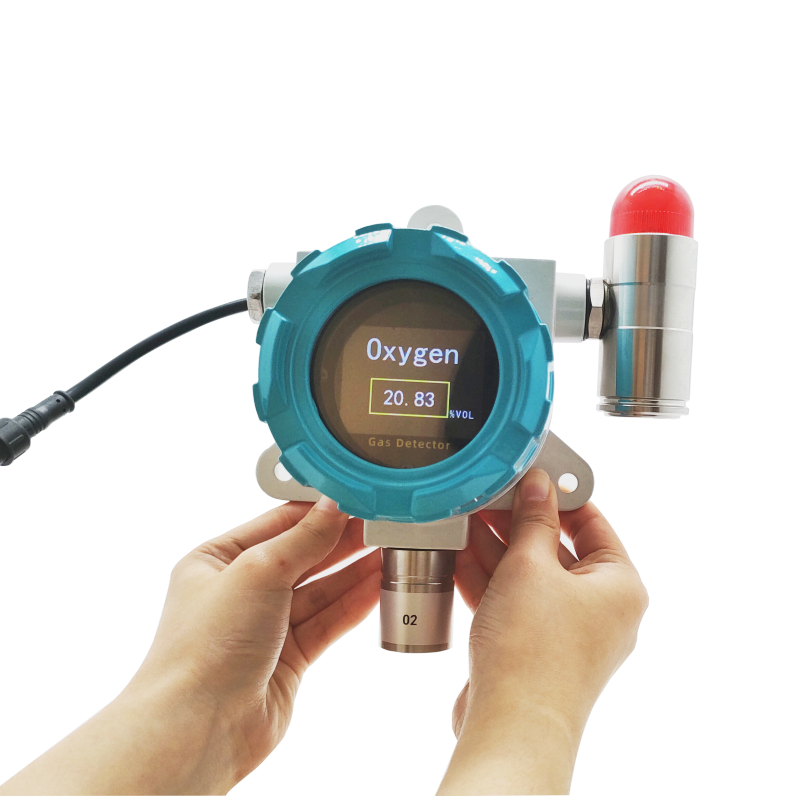Gas sensors, as core components for environmental perception and safety assurance, are deeply embedded in every corner of modern society. The following international case studies illustrate how gas sensors play an indispensable role in industries, urban life, environmental protection, and consumer electronics.
Case 1: United States – Toxic and Combustible Gas Monitoring in Industrial Environments
Background:
Industries in the U.S., such as oil and gas, chemicals, and manufacturing, operate under strict worker safety and health regulations (e.g., OSHA standards). Continuous monitoring is critical in confined or semi-confined spaces where leaks of combustible or toxic gases may occur.
Application & Solution:
Fixed gas detection systems and portable gas detectors are widely deployed in industrial settings like factories, refineries, and wastewater treatment plants.
- These devices integrate sensors specific to certain gases, such as: Electrochemical sensors (for toxic gases like carbon monoxide and hydrogen sulfide), Catalytic bead sensors (for combustible gases like methane and propane), and Infrared sensors (for carbon dioxide).
- Fixed detectors are installed at key risk points and connected to a central control system. If gas concentration exceeds a safe threshold, they immediately trigger audible and visual alarms and can automatically activate mitigation measures like ventilation.
- Workers are required to use portable detectors for pre-entry and continuous monitoring before entering confined spaces.
Outcomes:
- Ensures Personnel Safety: Significantly prevents worker poisoning, asphyxiation, or explosion incidents caused by gas leaks.
- Regulatory Compliance: Helps companies comply with stringent occupational safety and health regulations, avoiding heavy fines and legal risks.
- Improves Emergency Response: Real-time data allows safety teams to quickly locate the source of a leak and take action.
Case 2: European Union – Urban Air Quality Monitoring Networks
Background:
Under the EU’s Ambient Air Quality Directive, member states are required to establish dense air quality monitoring networks in urban areas to address pollution from traffic and industrial emissions, particularly PM2.5, PM10, nitrogen dioxide, and ozone.
Application & Solution:
Many European cities, such as London and Paris, have deployed hybrid networks comprising reference-grade monitoring stations and low-cost micro-sensor nodes.
- Reference-grade stations use high-precision analyzers like Optical Particle Counters, Chemiluminescence analyzers (for nitrogen oxides), and UV Absorption analyzers (for ozone) to provide official, legally-defensible data.
- Micro-sensor nodes are distributed more densely on street furniture, lampposts, or buses, using Metal Oxide Semiconductor (MOS) sensors and optical particle sensors to provide high spatiotemporal resolution pollution maps.
- Data from these sensors is integrated via IoT platforms and published to the public in real-time.
Outcomes:
- Detailed Pollution Mapping: Helps governments and citizens understand the sources, distribution, and dynamics of pollution, supporting environmental decision-making.
- Promotes Public Health Actions: Real-time Air Quality Index (AQI) alerts sensitive groups (e.g., asthma patients) to take protective measures.
- Evaluates Policy Effectiveness: Used to assess the impact of environmental policies like Low Emission Zones and traffic restrictions.
Case 3: Japan – Gas Safety in Smart Homes and Buildings
Background:
In Japan, an earthquake-prone and densely populated country, preventing fires and explosions caused by gas leaks is a top priority for home and commercial building safety. Additionally, concern for indoor air quality has become part of healthy living.
Application & Solution:
- Gas Safety: The installation of combustible gas sensors (typically using catalytic bead or semiconductor technology) is virtually mandatory in all Japanese homes and apartments to detect leaks of city gas or LPG. They are often interlocked with gas emergency shut-off valves, automatically stopping the gas flow upon detection.
- Indoor Air Quality: In high-end residences, offices, and schools, carbon dioxide sensors (typically using Non-Dispersive Infrared technology) act as the “brain” for ventilation systems. When elevated CO₂ levels are detected, the system automatically activates to introduce fresh air, maintaining a comfortable and healthy indoor environment.
- Fire Warning: Photoelectric smoke detectors often integrate carbon monoxide sensors to provide earlier and more accurate warnings of smoldering fires.
Outcomes:
- Significantly Enhanced Home Safety: Drastically reduces accidents caused by gas leaks.
- Energy-Efficient Ventilation: Demand-based ventilation strategies significantly reduce building energy consumption compared to continuous operation.
- Creates Healthy Indoor Environments: Effectively reduces the risk of “Sick Building Syndrome” and improves comfort for occupants and workers.
Case 4: Germany – Industrial Process and Emission Monitoring
Background:
Germany possesses a strong industrial base and adheres to strict EU industrial emission regulations. Precise monitoring of gas concentrations in industrial processes is crucial for optimizing combustion efficiency, reducing energy consumption, and ensuring compliant emissions.
Application & Solution:
- Process Control: In combustion processes (e.g., boilers, furnaces), zirconia oxygen sensors are used to monitor the oxygen content in flue gas in real-time. This allows for precise control of the fuel-air ratio, ensuring complete combustion and saving energy.
- Emission Monitoring: Continuous Emission Monitoring Systems are installed on smokestacks and exhaust ducts. These systems integrate various high-precision analyzers, such as Non-Dispersive Infrared sensors (for CO, CO₂), Chemiluminescence analyzers (for NOx), and UV Fluorescence analyzers (for SO₂), to provide uninterrupted measurement and recording of pollutant concentrations for compliance reporting.
Outcomes:
- Improved Energy Efficiency & Cost Reduction: Directly reduces fuel consumption by optimizing the combustion process.
- Ensures Regulatory Compliance: Provides accurate, unalterable emission data, ensuring companies meet environmental regulations and avoid penalties.
- Supports Environmental Commitments: Provides data support for corporate sustainability reporting.
Conclusion
From industrial safety in the U.S. to urban air in the E.U., and from smart homes in Japan to industrial process optimization in Germany, these cases clearly demonstrate that gas sensor technology has become a cornerstone for ensuring public safety, protecting environmental health, enhancing quality of life, and achieving industrial intelligence and green transformation. As IoT and AI technologies continue to converge, their applications will become even more intelligent and ubiquitous.
Complete set of servers and software wireless module, supports RS485 GPRS /4g/WIFI/LORA/LORAWAN
please contact Honde Technology Co., LTD.
Email: info@hondetech.com
Company website: www.hondetechco.com
Tel: +86-15210548582
Post time: Oct-09-2025


